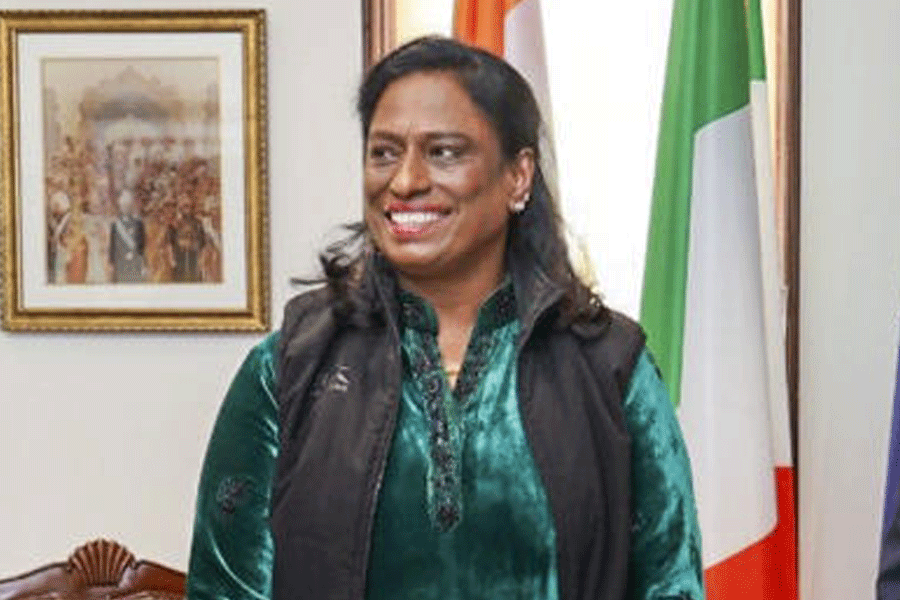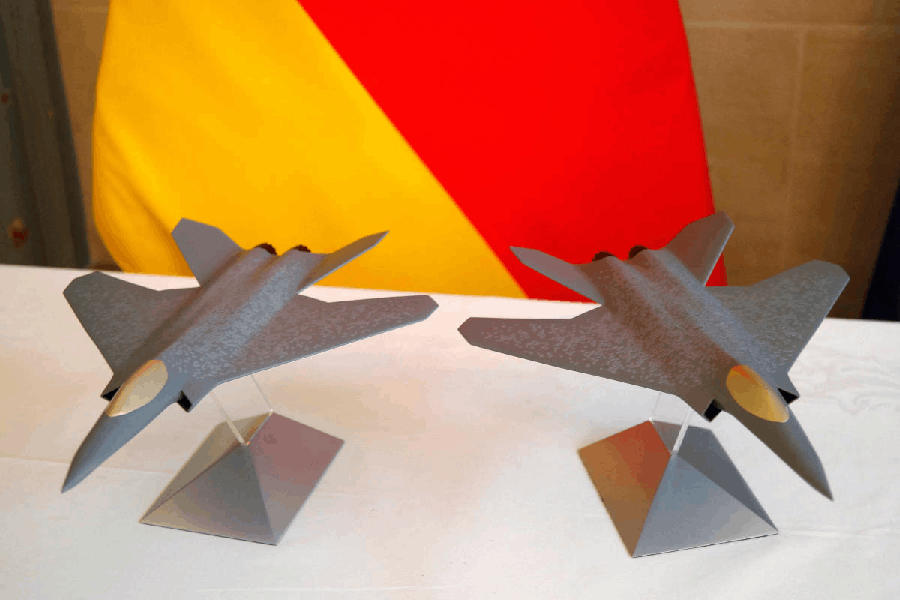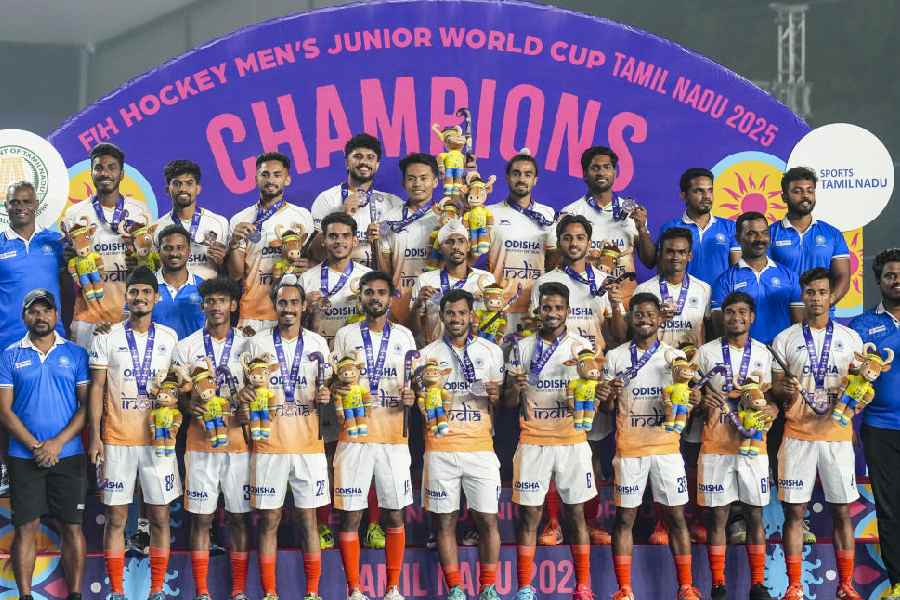 |
| Harbhajan Singh tosses a ball as Sachin Tendulkar watches during a practice session. (File picture) |
New Delhi, Feb. 17: Gopal Sinha has the solution for improving Indian bowlers’ performances on foreign soil. Get a sewing machine.
Bred on hand-stitched balls, the bowlers have often blamed machine-stitched Kookaburra balls for their poor show at away matches. Now, all they have to do is practise with balls stitched by Sinha’s machine.
Scientists at the Central Mechanical Engineering Research Institute (CMERI) in Durgapur have developed India’s first cricket-ball stitching machine that they hope will be picked up by the cricket authorities.
“Machine stitching will bring uniformity in cricket balls and repeatability in performance,” Sinha, the director of the CMERI, said.
At present, cricket balls in India are made through a completely manual process that involves two rows of decorative stitching on the two hemispherical leather cups with cork filling that are then joined with a central seam stitch.
The CMERI machine can make decorative stitches — two parallel rows closely spaced on each hemispherical cup before they are joined. The machine does not, however, provide the central seam that still has to be done manually.
Former India coach Madan Lal says it’s the decorative seams that hold the key to the way the ball swings, seams, and spins.
“Indian cricketers have long suffered on foreign pitches because our bowlers haven’t had enough experience with machine-stitched balls,” said Lal, also a member of the only Indian team to have won the World Cup, way back in 1983.
The hand-stitched balls made in India have a seam that protrudes more than the one on machine-made balls. This, Lal said, enables bowlers to grip the ball better. “Spinners can turn the ball more and reverse swing is easier with the hand-stitched balls.”
When the ball gets wet — a problem commonly encountered during day-night matches — bowlers tend to prefer the easier-to-grip hand-stitched balls, Lal said.
Hand-stitched balls, however, may display non-uniform features because the protrusion of the seam depends on the skill of the individual who has stitched it.
Until now, the hand-stitched Sanspareils Greenlands (SG) balls have been used by the Indian cricket board in domestic and international matches on Indian soil.
The BCCI, which annually buys about 4,800 SG balls, last year imported machine-stitched balls to help domestic cricketers get used to what is used in all cricket-playing countries except India and the UK.
While SG has no immediate plan to take up machine-made balls, its director Puneet Anand admitted they are cheaper. “We’ve stuck to India’s tradition of hand-stitched balls, but eventually Indian cricket will have to move towards international standards,” he said.











